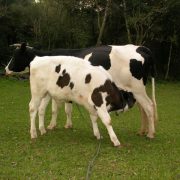Agricultural Insurance: A tool for agricultural policy to be proud. José María García de Francisco. ENESA
It´s now 30 years since Spain joined the European Union (then the European Economic Community), during which we have seen the integration of our agriculture in the European single market, implementation of the common agricultural policy and successive reforms this, Spain continues to maintain its agricultural policy in a “differential factor”, a tool that was implemented prior to this integration process and currently remains fully valid.
I mean, of course, the Spanish Agricultural Insurance System, which has turned Spain into a country of international reference in the field of agricultural insurance.
Our Combined Agricultural Insurance as we know it today, it has existed since 1980 and is a tool of unique value for our farmers, allowing them to sound management of natural risks to which its business is facing and thus have stability in income that makes it possible to plan investments and fosters innovation in their productions.
In the European context, the Spanish Agricultural Insurance is a singularity, since its implementation is much higher than that observed in other countries around us: it involves nearly 500,000 annual policies and insured capital of 12,000 million euros, which it accounts for about a quarter of our agricultural production.
Much of the success of our Agricultural Insurance System is its mixed public-private nature, which allows both state and regional governments and the insurance industry and the agricultural sector itself involved in decision-making. This gives the flexibility and dynamism to ensure that, throughout its 37-year history, has gradually expanded its scope to cover almost all agricultural, livestock, aquaculture and forestry production, and has adjusted its coverage the needs of farmers, who currently have a wide range of insurance options, covering both the specific damage and, in some productions, the loss of income.
Agriculture, represented through their professional organizations and agricultural cooperative organizations, has been and remains one of the main drivers of our system, as their active involvement is essential in the design process and update different lines of insurance and, on the other hand, develops a valuable work of promotion and dissemination of Agricultural insurance, also participating in the market.
The particular relevance is the role of private insurance companies, who are providing the service and assume the risks involved in each policy underwritten insurance and function AGROSEGURO, management entity in which such insurers participating in regime coinsurance and is responsible for conducting, on their behalf, the formalities linked to the Agricultural Insurance (cash in the company and settlement of subsidies, insurance claims processing, surveys and payment of compensation). AGROSEGURO intervention enables compensation are dealt with much more flexibility than if they were in direct compensation from the government, and that our farmers can collect them within an average of 45 days.
However, this system would not be viable without the participation of the public sector, since the high accident rate of farming deter insurers offer this type of insurance if you do not count on the support of the Insurance Compensation Consortium as a reinsurer and also this accident makes the price of the policies reach levels that would be prohibitive for farmers not having the financial support of the Administration. In this regard, it should be recognized that both the Central Government and most regional administrations have been maintaining its commitment to the Agricultural Insurance despite the serious budgetary difficulties that have been experienced in recent years. In the case of MAGRAMA, the grant to the Agricultural Insurance granted by ENESA, after suffering a major adjustment in previous years, it has increased by 6% for the current Plan, up to 211 million euros. So there will be increases in the contributions from the regions, which account for about 50 million euros, and return to the system of some communities that had stopped subsidizing Agricultural Insurance because of the crisis are also envisaged.
I want to have an impact on various aspects of particular interest with respect to such public support Agricultural Insurance, which are not always well known to the public:
First, thanks to agreements signed with AGROSEGURO, grants ENESA and some regions are automatically granted in the form of discount on the price of the policy, which, together with the possibility of installment payment with endorsement SAECA, which has been launched since last year, greatly facilitates the insurance by farms whose financial situation does not allow them sometimes meet timely payments on a high level.
On the other hand, following the recent amendment of Law 87/1978 of Agricultural Insurance, the help of the central government has the character of a direct grant, which means that it is a right of all insured that meets the requirements .
We must also bear in mind that our grants are awarded to Agricultural Insurance in the form of State aid, under the EU Guidelines on State aid in the agriculture and forestry sectors and in rural areas and, therefore, these grants are not part of Community funds for the CAP, but are in addition to those funds, originate in state budgets and / or regional and represent a real added value for our farmers, promoting competitiveness within the European Union.
Finally, note that from the point of view of the administration, such aid is one of the most efficient ways of using public funds, since its public-private nature gives them a multiplier effect: for every euro money public spent on subsidizing the Agricultural Insurance, farmers receive compensation amounting to 2.44 euros, also, as I said, are dealt with much more agile than state compensation form.
In conclusion, I have the firm conviction that our Agricultural Insurance System is an instrument of agricultural policy that effectively complements the income support measures of the CAP shape and brings a significant added value to our agricultural sector. Therefore, and considering that is one of the few areas in which we have the power to implement a national agricultural policy, I think it is a tool we can be proud and deserve every effort we can devote to ensure continuity for the future, especially in the current context of increasing natural hazards due to climate change, and economic uncertainties, arising from market volatility.
José María García de Francisco. Director of the State Agency for Agricultural Insurance, ENESA (MAGRAMA)

















